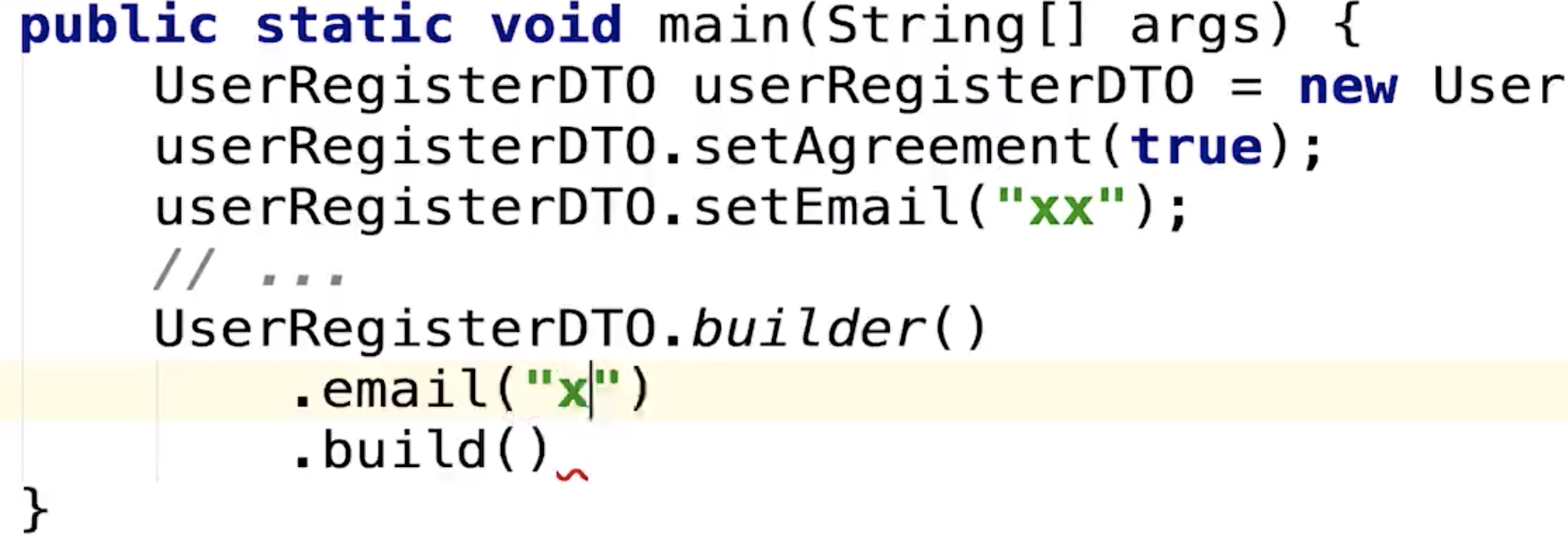[Java 开发利器Lombok] 常用注解演示
在以往的对象模型编码时,我们需要写一大堆的get/set以及不同的构造函数等。Lombok为我们提供了一个非常好的插件形式。
在大多数的项目中,只需要使用到以下集中Annotation就足够了,如果需要查看更多的选项,请参考: 传送门
-
@Getter -
@Setter -
@ToString -
@RequiredArgsConstructor生成final 字段的构造函数/**
*/
@RequiredArgsConstructor
class UserVO {
private final Integer id;
private final String name;
private int age;
}
/**
* 编译后生成的代码
*/
class UserVO {
private final Integer id;
private final String name;
private int age;
public UserVO(Integer id, String name) {
this.id = id;
this.name = name;
}
}
- `@Data` 组合注解
/**
* @see Getter
* @see Setter
* @see RequiredArgsConstructor
* @see ToString
* @see EqualsAndHashCode
* @see lombok.Value
*/
@Target(ElementType.TYPE)
@Retention(RetentionPolicy.SOURCE)
public @interface Data {
/**
* ...
*/
String staticConstructor() default "";
}
- `@Builder` 改变原有赋值模式 - 使用前  - 使用后(建造者模式,在Feign源码中被大量使用)  - `@Slf4j` lombok 提供,等价于
public static final Logger LOGGER =
LoggerFactory.getLogger(UserCenterApplication.class);
/**
- This annotation is valid for classes and enumerations.
- @see org.slf4j.Logger
- @see org.slf4j.LoggerFactory#getLogger(java.lang.Class)
- @see lombok.extern.apachecommons.CommonsLog @CommonsLog
- @see lombok.extern.java.Log @Log
- @see lombok.extern.log4j.Log4j @Log4j
- @see lombok.extern.log4j.Log4j2 @Log4j2
- @see lombok.extern.slf4j.XSlf4j @XSlf4j
- @see lombok.extern.jbosslog.JBossLog @JBossLog
- @see lombok.extern.flogger.Flogger @Flogger
*/
@Retention(RetentionPolicy.SOURCE)
@Target(ElementType.TYPE)
public @interface Slf4j {
/** @return The category of the constructed Logger. By default, it will use the type where the annotation is placed. */ String topic() default "";
}
正文到此结束
热门推荐
相关文章
Loading...












![[HBLOG]公众号](https://www.liuhaihua.cn/img/qrcode_gzh.jpg)

